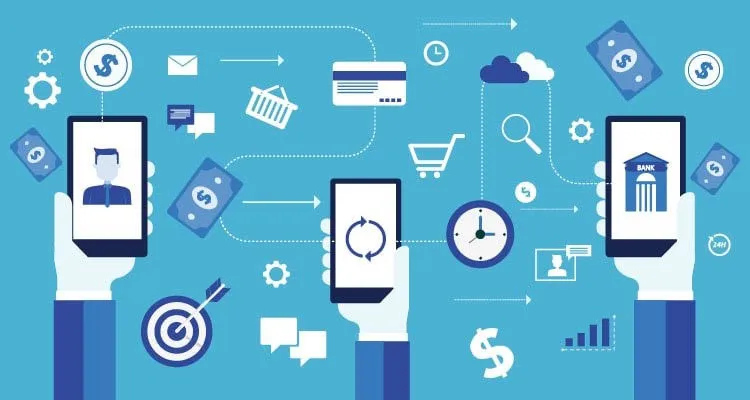What is payment processing?
Payment processing is the process of processing and facilitating financial transactions between buyers and sellers. It includes various steps such as authorization, verification and transfer of funds from buyer's account to seller's account. Payment processing can be done through various methods, including credit and debit cards, bank transfers, e-wallets and mobile payments.
With the growth of e-commerce and online shopping, payment processing is an essential part of any business that accepts payments from customers. It allows businesses to offer different payment options to their customers, which can increase customer satisfaction and loyalty. Payment processing also helps businesses streamline their financial transactions, making it easier to manage and track payments. In addition, payment processing provides a level of security and fraud protection, protecting both buyers and sellers from fraudulent activities.

What is payment processing?
How does payment processing work?
Payment processing involves several steps, including transaction processing, authorization and payment, and the involvement of different parties. Here's an overview of how the checkout process works:
Transaction Process Flow
The transaction process flow begins when a customer purchases a product or service from a seller. Customers provide their payment information, which may include credit or debit card details, bank account information or other payment methods. The merchant then sends the payment information to their payment processor or payment gateway to process the transaction.
Authorization and settlement
The payment processor or gateway then sends the payment information to the customer's bank or credit card company to authorize the transaction. The bank or credit card company will check if the customer has enough funds or credit lines to complete the purchase. If the transaction is authorized, funds are transferred from the customer's account to the merchant's account through the payment processor or gateway. This process is called resolution.
Payment processors
The payment processors involved in the transaction include the merchant, the customer, the bank or credit card company, and the payment processor or gateway. A seller is a business that sells products or services and receives payments. A customer is a person who purchases a product or service and provides payment information. A bank or credit card company is a financial institution that provides funds to complete a transaction. A payment processor or gateway is a third-party service that processes transactions between a merchant and a bank or credit card company.

How does payment processing work?
Payment processing methods
Payment processing methods refer to the different ways customers can make payments for goods or services. Here are some of the most common payment processing methods:
- Credit and debit cards are among the most common payment processing methods used today. They allow customers to make purchases using their credit or debit card details. When a customer uses their card to make a purchase, payment is processed through a payment processor or gateway, verifying card details and authorizing the transaction.
- A digital wallet is a type of digital wallet that allows customers to store their payment information and make payments online or in-store. Examples of e-wallets include PayPal, Apple Pay, and Google Pay. E-wallets are becoming more and more popular as they offer a quick and convenient way to pay without carrying cash or cards.
- Bank transfer involves the direct transfer of funds from the customer's bank account to the merchant's bank account. This payment processing method is commonly used for larger purchases or international transactions.
- Mobile payments allows customers to make payments using their mobile device, such as a smartphone or tablet. Mobile payments can be made through a mobile payment application or mobile wallet, which stores the customer's payment information and allows them to make payments quickly and easily.
- A cryptocurrency is a digital currency that uses cryptographic techniques to regulate the creation of currencies and to verify transfers. Cryptocurrency payments are becoming increasingly popular as they provide a fast, secure and decentralized payment method.
In a nutshell, payment processors are the different ways customers can make payments for goods or services. Some of the most popular payment processing methods include credit and debit cards, e-wallets, wire transfers, mobile payments, and cryptocurrencies. Each payment method has its own advantages and disadvantages, and businesses can offer different payment methods to meet the needs and preferences of their customers.

Payment processing methods
Difficulty in processing payments in today's digital age
In today's digital era, payment processing faces specific difficulties arising from rapid advances in technology and changing consumer expectations. Here are some of the challenges faced in payment processing in today's digital age:
- Cybersecurity Risks: With increasing reliance on digital transactions, the risk of data breaches and cyberattacks escalates. Protecting customers' sensitive information from hackers and ensuring robust cybersecurity measures are vitally important during payment processing.
- Omnichannel payments: Consumers now expect a seamless checkout experience across multiple channels, including online platforms, mobile apps, and in-store environments. Integrating and synchronizing payment processing with sales management systems across these diverse channels can be complex, requiring careful coordination and technical expertise.
- Mobile Payments: The rise of mobile devices and mobile wallets has brought new challenges and opportunities. Ensuring compatibility with different mobile payment platforms, optimizing the mobile payment experience, and addressing security concerns related to mobile payments pose challenges. challenge for businesses.
- Regulatory compliance: The digital age has created new regulations and standards for data protection and consumer privacy, such as the General Data Protection Regulation (GDPR) and the General Data Protection Regulation (GDPR). California Consumer Privacy Act (CCPA). Complying with these regulations while processing payments can be demanding and requires businesses to stay up to date with the evolving regulatory landscape.
- User Experience: As the digital landscape becomes more competitive, businesses need to prioritize providing a seamless and easy checkout experience for customers. Ensuring a fast, intuitive, and secure checkout process is critical to reducing cart abandonment rates and improving customer satisfaction.
- Integration with Emerging Technologies: The advent of emerging technologies, such as blockchain and AI, or near-field communications technologies presents both opportunities and challenges. Integrating these technologies into payment processing systems requires careful planning, investment, and expertise.
Addressing these challenges in payment processing in the digital era requires businesses to adopt strong cybersecurity measures, comply with regulations, optimize the multi-payment experience channel, leveraging mobile payment technology, prioritizing user experience and embracing emerging technologies. Partnering with experienced payment processing and technology providers can help businesses overcome these challenges and seize opportunities in the evolving digital landscape.












Replies to This Discussion